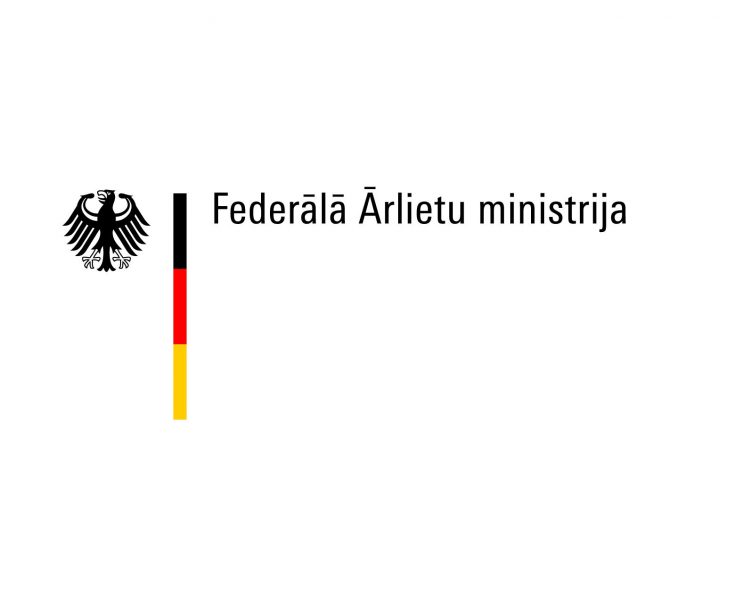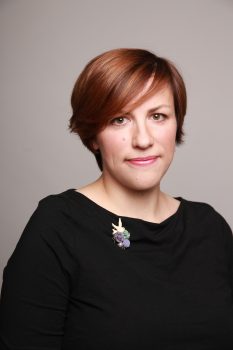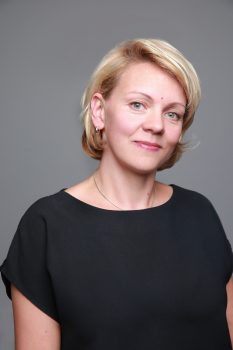This is a translation of the main conclusions of the research report, originally prepared in Latvian.
Full report (in Latvian) is available here.
About the Study
The research conducted by the Centre for Public Policy PROVIDUS was carried out with the financial support of the German Embassy in Latvia within the project Engaging Municipalities Part 3: Engaging Riga, implemented in 2021[1]. The Centre has been analysing public participation processes in Latvian municipalities for three years. The 2019 Report on the Examples of Civic Involvement in the Municipalities of Latvia was dedicated to identifying successful and innovative examples of public participation[2]. Meanwhile, the 2020 study Civic Involvement in the Preparation of Municipal Planning Documents: Evaluation of Local Government Practice in Latvia analyses local governments’ experience in elaborating development planning documents, assessing the extent and the ways of involving municipal residents and NGOs in the process[3]. In 2021, the focus was on the capital city Riga, which, due to its size, had been left out of the municipalities studied in the previous papers.
The aim of the study is to identify the institutionalised mechanisms of public participation in Riga Municipality, to evaluate their functioning, and to promote residents’ empowerment in the future.
Methodology
The conclusions of the study are based on data obtained through both qualitative and quantitative methods, as well as in-depth analysis of documents, laws and regulations, and other materials such as minutes of advisory bodies, Council meeting materials, explanatory notes to binding rules, and minutes of committee meetings.
The study uses quantitative data obtained from: an opinion poll of Riga residents conducted by the research centre SKDS in July and August 2021; a survey conducted by PROVIDUS among Riga Municipal Administration employees; a survey conducted PROVIDUS among members of Riga City Council (both on Google Forms).
The qualitative data collected in the study comes from focus groups and interviews with officials from different levels of the local government: Members of Riga City Council: Kaspars Spunde (New Unity), Selīna Vancāne (The Progressives), Viesturs Kleinbergs (The Progressives), Uģis Rotbergs (New Unity), Juris Radzevičs (Honour to Serve Riga). The study involved focus groups or interviews with staff from the Welfare, Housing and Environment, and Transport Departments of Riga City Council, as well as the employees of Riga City Neighbourhood Residents Centre. The research involved a focus group with local coordinators of Riga neighbourhoods, as well as individual interviews with representatives of NGOs: Māris Jansons (Riga Neighbourhoods Alliance), Māris Jonovs (association Drošās ielas), Ivars Balodis (association Apeirons), Didzis Meļķis (Manabalss.lv), Paoli Saloranta (Helsinki Municipality).
Context of the research
Local governments represent democracy at the local level, where the active participation of residents in decision-making is important, especially on issues that are important to them and regarding which the local government supports residents’ wishes to get more involved – by volunteering in their neighbourhoods or participating in a local working group. Public participation is key to people’s respect for local government decisions and trust in municipal institutions. Various institutional mechanisms such as public consultations, advisory councils, working groups, participatory budgets, and discussions on possible solutions are among the ways to provide residents with the opportunity to express their views to the local government. Residents also regularly interact with the local government to access its various services, and it is important for the local government to make sure that the services it provides meet residents’ needs and deliver the expected results. This can only be done by getting feedback from the service users themselves, namely, the residents. The views received do not always bring about significant change or offer a ready-made solution to a problem, but it is important that they are identified, listened to, and taken into account wherever possible.
The size of Riga poses a major challenge for the municipality in ensuring public participation. Riga covers an area of approximately 304 km2 and has more than 615 000 inhabitants living in different parts of the city. Each neighbourhood has a different social situation, resident mobility, access to different public or municipal services, economic activity, population density, and many other parameters that also influence the development needs of the area. By way of comparison, one of the largest neighbourhoods in the city – Purvciems – has about 62 thousand inhabitants, which is more than most cities in Latvia, for example, Jelgava has 55 thousand inhabitants, and Jūrmala is home to about 50 thousand. Big cities need to find a way to develop the entire territory in a balanced way, involving their residents in the process.
The study was carried out at a time when the newly elected Riga City Council had been in office for one year, and these changes have also had an impact on the opportunities for public participation in local government processes. In the extraordinary 2020 elections to the Riga City Council, after about 10 years in power, the long-standing tandem of parties – Concord and Honour to Serve Riga – was replaced by a coalition of four political groups[4] with Mārtiņš Staķis (For!) as Mayor of Riga, leaving the previous two ruling parties in opposition. The new coalition expressed their determination to introduce significant improvements in the governance of the city to ensure it is managed in a modern way and responsive to the needs of its residents[5]. Some of the elected members came into the public eye before their election thanks to their civic activism in the neighbourhoods.
The main objective of this study is to assess public participation mechanisms in the daily decision-making process of the local government, analysing the different institutional mechanisms – both in advisory councils or commissions and when holding consultations regarding the drafting of binding regulations for the municipality. The study did not address the participation of residents in the preparation of development planning documents of the city, as several of them were elaborated during the preparation of the study and civic involvement in this process is regulated in a relatively detailed manner, i.e. the responsible municipal authorities are obliged to hold consultations with residents at least within public discussions.
The study was organised in three parts, based on an in-depth analysis of various data and an evaluation of the functioning of institutional mechanisms, interviews with more than 20 officials from different levels of local government and NGO activists, and focus groups. First, the drafting of binding regulations and consultations with various target groups regarding this process were assessed, followed by an analysis regarding the activities of advisory councils and other participatory bodies. Finally, the third part looks at some relatively new trends in Riga that are closely related to strengthening civic involvement in the work of Riga’s local government. By evaluating the regulatory framework and the municipal practice, each section of the study adds proposals that could improve public participation processes in the future.
The study includes a number of additional materials – a collection of tips for different situations where civic involvement is an important addition to the formal decision-making process, when it is requested by the residents themselves (collective submissions) or needed for a specific issue (large-scale municipal projects), or when the municipality has the opportunity to take part in a project where work with target groups of the public can be planned in advance.
Main conclusions
The focus of the study is on civic involvement in the decision-making processes of the local government, therefore it includes an analysis of all the established institutional mechanisms used by local governments to engage activists and NGOs (associations and foundations) to consult them on issues of municipal importance and to hear the needs of the community. Advisory bodies (commissions, councils, working groups), the drafting of binding regulations for the municipality and consultations with the public in the process were all examined.
The study was carried out during a transition period, when the newly elected Riga City Council had been in office for approximately a year. Transition phases are usually characterised by various institutional changes, as is currently the case in the municipality of Riga. In the context of this study, the newly elected local government representatives have expressed their determination to increase civic involvement in their work. The first steps have already been made in this direction, such as various new consultation opportunities, even if their successful implementation still requires some adaptation at the administrative level of the local government management, as well as at the political level.
The need for a systemic approach to greater involvement of residents in the work of the city of Riga is also confirmed by an opinion poll (by SKDS), according to which 67% of Riga residents surveyed would like the City Council to seek their opinion more often, while only 35% believe that the City Council will listen to their opinion, and 60% do not believe it at all[6].
Drafting of binding regulations
The process of drafting binding regulations has not undergone any major changes in the last year as regards the involvement of resident target groups. The examination of the drafting and discussions of binding regulations revealed a need for public involvement and improvement of the decision-making process. Main challenges:
- Consultations with residents, NGOs, or external experts has not yet become an integral part of the drafting process of municipal laws and regulations, for example, when binding regulations affect a major part of residents or provide for significant changes and innovations for certain groups of society;
- Lack of an internal “control mechanism” whereby the responsible staff of the municipal administration or the City Council members involved in the further consideration of the draft regulation verify that the local government has held consultations where it is needed.
Although consultations do take place in some cases, it is not an integral part of drafting decisions or binding regulations. Politicians expect that the draft documents submitted to committees, where the content requires it, are sufficiently discussed with a wide range of stakeholders, including the public and experts, but the explanatory notes to the drafts show that consultation is largely absent. However, even when such shortcomings are noticed at the political level, for example, upon considering draft documents in committees, members of committee do not consider the need to organize the consultations with the stakeholders within the committee meetings due to the absence of such a tradition or practice. Sometimes stakeholders apply upon their own initiative, but this cannot be considered a good decision-making process, i.e. one that assesses the wider impact of the draft (economic, environmental, security, etc.), including its impact on the public. City Council members mainly verify the quality of drafts at committee meetings, as far as fits with the meeting agenda and if they are willing to look into it. It would be important to have more quality checkers in the drafting of decisions who make sure that, when drafts are received for consideration, they have been subject to an impact assessment and that the chosen solution is determined to be the best of all possible options. It would be useful for the local government to establish guidelines on best practices and main principles for drafting decisions or binding regulations, including ways to assess whether target groups and stakeholders need to be consulted, while also reminding about the existing possibilities in municipalities in the form of various consultative mechanisms.
Advisory bodies
The local government had previously set up various advisory mechanisms that are still in place: there are two advisory councils for consultations with NGOs – one for social integration matters, the other dedicated to persons with disabilities. This year, a new advisory council has been established in the municipality – the Council for the Implementation of the Memorandum of Cooperation signed between Riga City Council and NGOs (hereinafter referred to as the Memorandum Council), where the local government plans to consult with NGOs from various sectors. An advisory commission on youth matters is also in the process of being set up. In addition to the advisory councils, there are other commissions and working groups at different levels of the local government, set up at the level of the City Council’s standing committees or departments, established, at least partly, with the purpose of consulting the public. The analysis of the functioning and regulation of these different institutional mechanisms allowed to identify a number of challenges, three of which are briefly summarised below:
- Lack of transparency and common operating principles; lack of information on the institutionalised forms of consultation in the municipality and the ways for civic involvement. The network of commissions is wide, but in practice there are few opportunities to participate in their work;
- The potential of the existing advisory councils could be considerably increased by improving their functioning;
- The range of issues requiring regular consultations with the public and experts is much broader than just the two areas of integration and disability matters. One of the areas where there is a strong public interest but no appropriate consultative mechanism is public transport and road safety in Riga.
The municipality has various bodies at all levels of local government – advisory councils, advisory commissions, coordinating commissions, and working groups. They are designed for a variety of purposes, some of which include promoting public participation, but they are currently falling short in this area. Their work is not visible enough for stakeholders to know that such bodies exist, what matters they consider (agendas), and whether organisations representing residents, enthusiasts, and experts in the field can participate in their work. It is therefore understandable that NGOs are rarely represented in these bodies.
The study concludes that the consultation mechanisms of advisory councils are a good instrument as such, yet it has been used ineffectively. These councils have little impact, and the issues discussed are focused on specific problems or general issues rather than systemic improvements. The councils meet infrequently and sometimes struggle to fill their agendas because NGO partners are not very active either. These councils have not come to the attention of other municipal institution staff as a platform adapted for discussing cross-sector matters. For example, the advisory council for persons with disabilities could be used not only for narrow social issues, but also for other areas of municipal activity, such as consultations on housing policy, organisation of traffic in the city, or the provision of education services. Similar conclusions apply to the advisory commission on integration where it would be useful to discuss not only opinion polls on integration issues and Latvian language learning opportunities, but also other issues, such as, but not limited to, the quality of education services, extracurricular education, and housing policy. NGOs would also be much more willing to take part in advisory bodies if they saw them as a mutually beneficial platforms addressing important issues and achieving improvements.
While the Memorandum Council could eventually become a platform for cross-sectoral discussions, it will not replace the discussions necessary in the specific sectors. Changes in Riga’s urban environment introduced over the last year clearly show the need for such a consultative mechanism in the field of traffic, in particular, traffic organisation and public transport planning, which would make it possible to obtain the opinions of different experts and organisations, and to reach an agreement between different groups. A similar consultation mechanism should be established regarding other municipal functions, for example, in the field of education. Alternatively, the range of social groups consulted by the Welfare Department of Riga City Council should be broadened by including other groups, such as large families, senior citizens, etc. It is important that advisory bodies engage not only well-known experts and social activists, but also other traffic participants representing different social groups, for example, senior citizens, parents of school-aged children, and others. The study concluded that the range of organisations involved is rather narrow. Broader matters are to be discussed within the Memorandum Council, but it will not replace the need for in-depth discussions of certain sectoral issues, bringing together subject matter experts from the local government and non-governmental sector.
Identifying residents’ needs: neighbourhoods
This convocation of Riga City Council has made a significant contribution to boosting neighbourhood associations and the representation of residents’ interests by establishing a commission dedicated to Riga’s neighbourhoods and a funding programme to strengthen the administration and membership of neighbourhood associations. As part of reorganising its management structure, the local government has also introduced local neighbourhood coordinators whose role is to promote civic involvement by creating a closer link with the municipality. In 2019, the local government introduced a participatory budget call for proposals, which also increased civic involvement opportunities in municipal decision-making, allowing residents to take more responsibility for the development of their city and neighbourhood.
Significant progress has been made to empower residents to get involved in both improving their local neighbourhoods and wider municipal decision-making processes. Some of the support measures introduced could strengthen the capacity of neighbourhood associations and their influence on local government decisions if neighbourhood associations make use of them. However, while neighbourhood engagement is strongly encouraged, public participation should not be reduced to consultations with neighbourhood associations only. In addition to neighbourhood associations, many of which still have a relatively small membership, it would be important for the local government to also involve NGOs from different fields and organisations representing the interests of specific target groups.
In its third year of implementing the participatory budgeting call for proposals, Riga has accumulated the most experience in Latvia. Every year, new lessons are learnt and the civic involvement tool is improved, boosting engagement of neighbourhood movements in their respective areas, which is one of the greatest visible benefits for the municipality. Yet, the implementation phase is relatively slow with only two projects implemented so far. This year was the first time that, apart from neighbourhood and other types of associations, residents could also contribute their ideas and were quite active in doing so. These are important changes to promote the involvement not only of associations but also of residents. It can be noted that so far there has been no overseer responsible for this participatory instrument in the municipality who would take care of communication with residents, explaining what a participatory budget is and urging residents to use it, and who would provide support in developing ideas and monitoring the implementation of projects in the future. Until now, this has depended more on the enthusiasm of individual activists and members of the City Council, which is not a lasting solution. This year, the duties of the overseer have been taken on by Riga City Neighbourhood Residents Centre, which is to evaluate the implementation of the call for proposals and assist its revitalisation in close cooperation with the active NGOs and the Memorandum Council of Riga City Council.
Although Riga has seen significant improvements in its work with the public, unlike many large European cities, the local government has not yet experimented with new forms of civic involvement, such as citizen panels, deliberative methods or targeted e-consultations with residents, motivating them to express their opinions and ideas and discuss solutions remotely. In this respect, Riga still has a lot of untapped potential and opportunities to develop greater cooperation with its residents.
The report is written is as a part of the project “Engaging municipalities Part 3: Engaging Riga (esaistošas pašvaldības III: veicinot labākās iedzīvotāju iesaistes prakses Rīgā)”, which is funded by the Federal Republic of Germany Foreign Office.

[1] The aim of the project is to strengthen civic involvement in Riga Municipality and to promote a responsive and inclusive decision-making process, activating local democracy in the capital city.
[2] The report on the examples of civic involvement in the municipalities of Latvia is available on the website of PROVIDUS: https://providus.lv/article_files/3609/original/Report_Examples_of_civic_involvement_in_the_municipalities_of_Latvia.pdf?1572511959
[3] The full research in Latvian is available on the website of PROVIDUS: https://providus.lv/raksti/petijums-sabiedribas-lidzdaliba-pasvaldibu-attistibas-planosanas-dokumentu-izstrade-latvijas-pasvaldibu-prakses-izvertejums/
[4] The coalition includes a total of 7 political parties, several of which formed joint lists in the 2020 elections.
[5]Address of Mārtiņš Staķis at the press conference after 100 days in office. Available in Latvian: https://www.riga.lv/lv/jaunums/m-stakis-riga-klust-par-moderni-parvalditu-un-iedzivotajiem-pretimnakosu-pilsetu [Last accessed on 30 September 2021]
[6] Survey of Riga residents Views of Riga residents on topical issues in the municipality conducted by SKDS from 29 July 2021 to 11 August 2021 (804 respondents).


